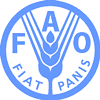 |
|||||||||
|
|||||||||||||||||||
|
|
FAO Urges Countries to Closely Monitor H1N1 in Pigs After the detection of the A/H1N1 virus in pigs in Canada transmitted by a human, FAO has again urged national authorities and farmers to carefully monitor pigs and investigate any possible occurrences of influenza-like symptoms in domestic animals.
"The human-to-animal transmission that occurred in Canada does not come as a surprise as influenza viruses are capable of transmitting from humans to animals," FAO's Chief Veterinary Officer Joseph Domenech said. "The Canadian event should therefore not be a matter of panic, but it should remind us of the human-animal link in virus transmission on which we definitely need to keep an eye." Influenza viruses, whether in humans or among animals, are constantly evolving genetically, along with changes in their ability to cause morbidity and mortality in humans or animals. Therefore the current A/H1N1 situation should be carefully monitored as many of the virus characteristics and developments are still unknown, Domenech said. Surveillance for porcine respiratory disease should be intensified and all cases of porcine respiratory syndrome are recommended to be immediately reported to veterinary authorities. It is also recommended to inform OIE and FAO about any occurrence of outbreaks of the new A/H1N1 Influenza virus in pigs. Strict biosecurity measures including restriction of movements of pigs, goods and people should be applied on all farms or holdings with swine showing signs of clinical respiratory illness until diagnosis of the illness has been made. Where A/H1N1 influenza is confirmed, movement restrictions should be in force for seven days after the last animal has recovered. Governments are requested to provide full support in improving biosecurity measures particularly to small and medium pig farmers. Persons who work directly with swine should be urged not to go to work if they have any signs of respiratory disease, fever or any influenza-like illness. Animal handlers and veterinarians should wear protective clothing to minimize the risk of being infected. FAO stressed that there is absolutely no need to slaughter animals in view of preventing circulation of the A/H1N1 virus. The agency emphasized that the A/H1N1 virus cannot be transmitted to humans by pork and pork products. Pork and pork products, handled in accordance with good hygienic practices recommended by the FAO/WHO Codex Alimentarius Commission and the OIE, will not be a source of infection.
|
||||||||||||||||||

|
|
||||||||||||||||||
| home | agri-services | pedigree
pen | news | dairy | beef | machinery quota | property | organisations | site map |
|||||||||||||||||||

